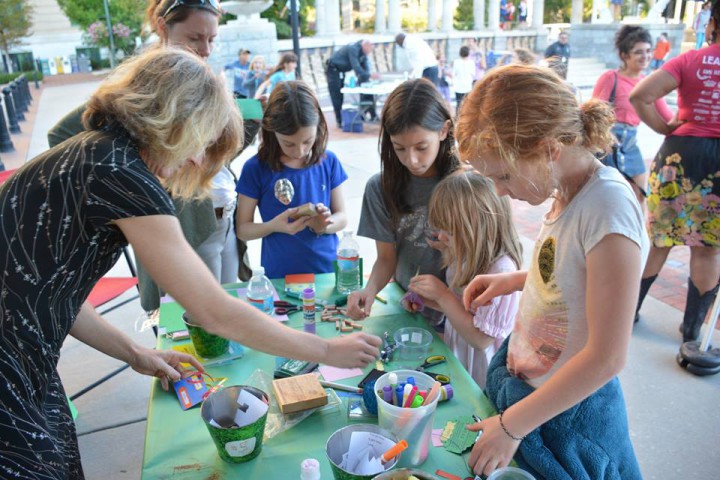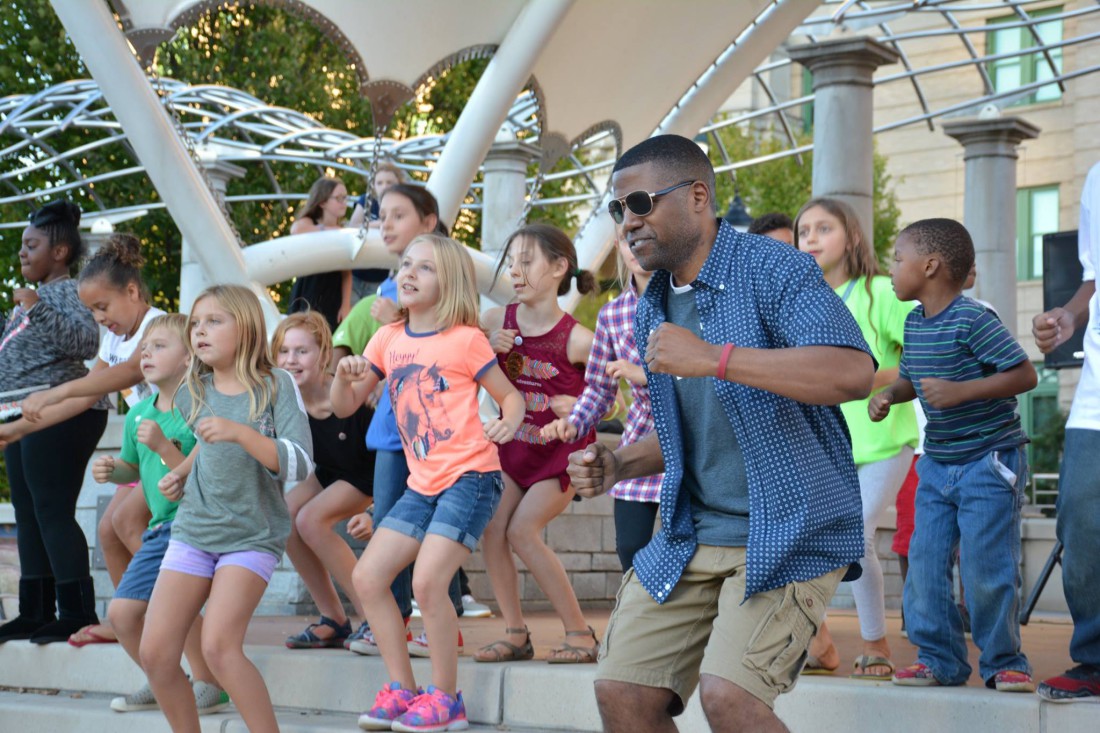Max Weissman, an adolescent counselor in Asheville, says cyberbullying is an issue that comes up all too often — by parents, educators and victims themselves — though often not directly.
“Hardly anyone has come to me for therapy for bullying, though I’d say half the people I work with have been bullied, and that’s a topic we talk about,” he says.
Weissman has had his own private practice, Counseling WNC, for two years, but he’s been counseling and working with adolescents in and out of the school system for the past 15. Summarizing bullying as “using power to get your way to accomplish something,” he notes that with the rise of technology and cyberbullying, “the nature of the bullying is generally the same. It just has a different format.” Cyberbullying can include any type of intimidation with electronics or internet use, from texting to posting on social media.
According to research done from 2007-2016 by the Cyberbullying Research Center, the percentage of middle and high school students who say they have experienced cyberbullying nearly doubled (18 percent to 34 percent) from 2007 to 2016. But a 2016 study from WalletHub that analyzed national trends indicated that North Carolina was one of the two states that ranked lowest in the percentage of high school students bullied on school property as well as online (30 percent). North Carolina was second lowest, higher only than Massachusetts.
Laura Meadows, assistant professor in the mass communication department at UNC Asheville, says one cause of the rise in cyberbullying could be the allure of anonymity in some online forums. “When you offer anonymity online, you are begging people to drop their inhibitions and say anything that comes to mind.”
Meadows incorporates social media into all of the classes she currently teaches as a way to help students broadcast their content to a larger audience. She says that although she hasn’t had to deal with any problems from her college students, she does see the dangerous potential in some forms of social media, especially anonymous ones and those with a younger user base.
“Psychologically, if we’re anonymous, we have less inhibitions, we are more likely to say the first thing that we think about,” Meadows says. “We don’t think about whoever we’re talking to as being another human person.”
Weissman works with the younger users Meadows refers to. He counsels adolescents and young adults from ages 12 to 22 — an age group he describes as “magical,” “powerful” and “beautiful” because it’s a time filled with lots of change. Weissman says many of his clients are just starting to craft their identities, and with that independence comes a natural lack of communication, especially when it comes to problems like cyberbullying.
“Adolescence is all about pulling away from your parents,” he says. “Part of the teenager, the child, even the 11- or 12-year-old doesn’t want to tell their parents because they want to be grown up, they want to handle this all by themselves.” But Weissman says he encourages his clients to seek out help whenever they feel the need, understanding it’s not a sign of weakness or immaturity.
Buncombe County Schools take preventive measures
October is National Bullying Prevention Month, a nationwide campaign founded in 2006 by the Parent Advocacy Coalition for Educational Rights, which established the National Bullying Prevention Center, a training center for families of children with disabilities. Since its inception, many schools nationwide have held special programs and rallies during October to raise bullying awareness and teach students the dangers of bullying in all its forms. Asheville City Schools put on an anti-bullying rally for kindergarten through fifth-grade students and families earlier this month.

The Buncombe County school system has also started incorporating more awareness about cyberbullying into its curriculum for the whole school year, not just October. This year, A.C. Reynolds Middle School established a program called Second Step in its curriculum schoolwide. Second Step centers on social-emotional learning, which teaches students social and personal skills, empathy, anger management and problem-solving. “The selling point for me was the empathy-building because that’s where we address bullying — having people understand what it’s like to be in someone else’s shoes,” says Reynolds Middle School counselor Alison Rhodes.
An integral part of Second Step is making sure there is a calm spot in each classroom, a place that gives students space to rejuvenate. Rhodes says such factors help create students’ well-being: “Student research has shown us that students with strong social skills are better able to avoid substance abuse, bullying and violence, all of which are prevalent challenges.”
David Thompson, director of student services for Buncombe County Schools, says social-emotional learning is a strategy used to combat and understand some behaviors caused by a student’s personal background. “Some of the behaviors that we see in schools are the reactions to bullying and other reactions to being called a name or the reactions to those kind of things that result in kind of disruptive behavior and often patterns that have been established over time based on adverse childhood experiences,” he says.
Second Step is one of many specialized curricula that Buncombe County Schools are implementing under the Compassionate Schools initiative, a model that focuses on key principles such as training and supporting all staff regarding trauma and learning, identifying vulnerable students, and determining outcomes and strategies. “Compassionate Schools is really using trauma-informed care, recognizing the impact of trauma and chronic stress,” Thompson explains. “It doesn’t have to be what we typically think of trauma. It could be long-term exposure to chronic stress that happened within our childhoods. Our students are still within the age group … with those adverse experiences that impact the way the brain functions and learns and responds to it.”

What happens to a cyberbully?
Although schools are taking more preventive measures and spreading awareness, cyberbullying still happens both in and out of the classroom. Melissa Lackey, school resource officer for Asheville Middle School, says each school has its own policy on cyberbullying and that the administration takes each case very seriously. Anyone can report a bullying incident anonymously or talk to her and any other authority figure at school, adding that each case is considered on its own merits. “We want to do everything we can to protect the kids,” she says. “Mediation and education are first. I don’t want to take a kid in and say, ‘I’m going to charge you with harassment because you did this.’ They need to understand what they did.”
Under state law, schools in North Carolina can now only charge students with harassment in cases involving cyberbullying since the state Supreme Court struck down the law that banned cyberbullying in 2016. The law had been in place since 2009 but was found to restrict free speech when the case North Carolina v. Robert Bishop went before the state Supreme Court.
Lackey says she would like to see laws established that create a safer space for students. “I wish our laws could catch up with all of this new technology,” she says. “On a personal level, I wish they would catch up to everything that’s going on and prevent some of these app makers from making things that endanger children.”
Where do we go from here?
Thompson says parents should engage their children in conversations about cyberbullying, especially since kids can be reluctant to bring up the conversation themselves. “I encourage parents to monitor their kids’ online activity,” he says. “They really need to be aware of what their kids are using and what they’re saying and what’s being said to them. … There’s nothing that’s going to replace that parental contact directly with the student about what’s going on, what’s happening on social media and creating that conversation with your children to keep them safe.”
Meadows points out that social media and other online forums can have positive as well as negative consequences. “I think social media is a tool like anything else,” she says. “The ramifications of social media are completely dependent on how you use it. I think the danger for high school students or even middle school students — because it seems like they’re getting social media accounts really early — is that a lot of what we put online doesn’t go away, so you can be held to whatever opinion you had as an eighth-grader.”
Weissman also uses a tool metaphor when describing social media’s pros and cons. “Things like these are tools,” he notes. “A hammer could be destructive. You can break car windows and smash windows and destroy lots of things. But a hammer could totally build a building and make shelter for a million people. It’s just a tool, and it’s really about the user behind the tool.”




This is very cool because in today’s world cyberbullying is quite common and many children suffer from it, all because they do not know how to resist it. I recommend everyone check it out to learn a little more about cyberbullying and how to deal with it. I am sure that it is very relevant and interesting for everyone.
Cool
Cool post thanks to author for it!
Cool article!